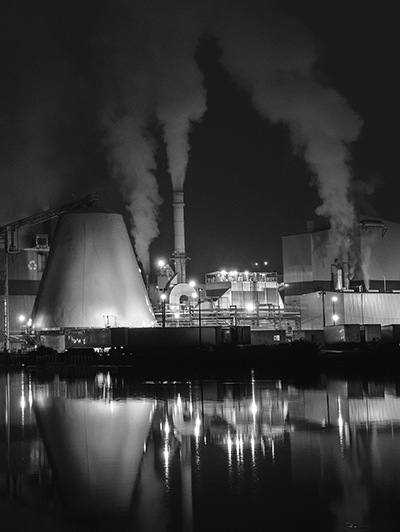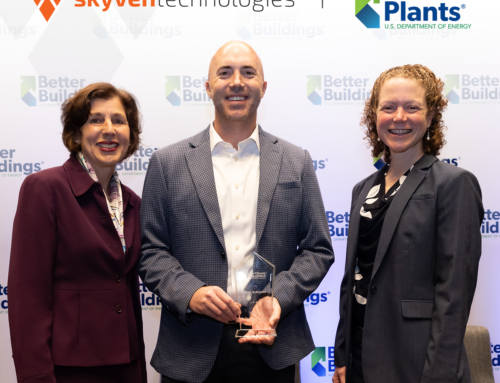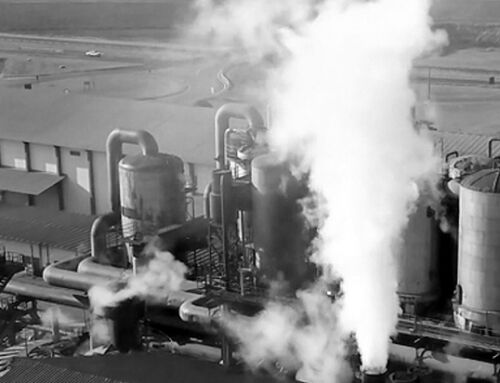On March 6, 2024, the Securities and Exchange Commission made significant changes in enhancing transparency and accountability. Among the key aspects of these new SEC reporting guidelines are the requirements concerning Scope 1 and Scope 2 greenhouse gas (GHG) emissions, revealing the growing importance of climate-related disclosures for investors.
These new guidelines have significant implications for businesses, particularly manufacturers with historically high CO2 emissions, such as the pulp and paper and food and beverage industries.
The heat is on, and with industry accounting for 23% of GHG in 2021, understanding these guidelines while making strides to reduce emissions is critical.
Knowing about some of the latest innovations for carbon emissions reporting and reduction can help businesses both satisfy the SEC’s requirements and reassure investors.
Understanding SEC Gas Disclosures
It’s not surprising that the SEC’s focus is on Scope 1 and Scope 2 greenhouse gas emissions: these are key metrics providing insights into a company’s environmental footprint:
- Scope 1 emissions include direct emissions from sources owned or controlled by the company, such as onsite combustion of fossil fuels.
- Scope 2 emissions include indirect emissions associated with purchased electricity, heat or steam.
Other Considerations for SEC Carbon Reporting
In addition to Scope 1 and 2 emissions, the new SEC rules mandate detailed disclosures of various aspects related to climate-related risks and impacts, including:
- Mitigation activities
- Board oversight and management’s role in managing climate-related risks
- Climate-related targets or goals
- The financial statement effects of severe weather events and natural conditions
“The final rules are a continuation of the Commission’s efforts to respond to investor need for more consistent, comparable, and reliable information about the financial effects of climate-related risks on a registrant’s business, as well as information about how the registrant manages those risks.” U.S. Securities and Exchange Commission
Benefits of SEC’s New Environmental Reporting
There’s increasing pressure on companies, particularly big industry, to reduce GHG emissions, not only from domestic and international regulations, but also the general public, lawmakers, investors, and the media. These regulations will force companies to mitigate emissions and provide more transparent reports about their emissions, which protects a company’s brand reputation, one of its most valuable intangible assets.
By accurately measuring and disclosing these emissions, businesses can fulfill regulatory requirements while gaining valuable insights into their carbon footprint. This understanding serves as a foundation for developing more robust sustainability strategies and identifying areas for emissions reduction and efficiency improvements.
By making strides to reduce their carbon emissions, businesses can demonstrate their commitment to environmental responsibility and show how they are contributing to global efforts to combat climate change.
The Future of SEC Carbon Reporting
Although the SEC has decided to put the implementation of the new rule on hold for legal reasons, reporting requirements will continue to evolve. We understand the importance of carbon reporting, which is why we’ve developed tools to facilitate that process for our customers.
Innovative Solutions for SEC Emissions Compliance and Reporting
Industrial heat is the cause of 20% of global carbon emissions, but did you know you can turn industrial waste heat into a carbon emissions mitigation solution?
Skyven Technologies offers innovative no capital expenditure (CapEx) solutions tailored to address both emissions mitigation and reporting through innovative technology that saves you money on operational costs..
Solutions for Emissions Mitigation
The Skyven Arcturus line of steam generating heat pumps efficiently reduces emissions while minimizing upfront costs for industrial manufacturing businesses.
How it works:
Our steam-generating heat pump produces high-quality, emissions-free industrial steam by capturing low-grade heat from industrial processes. Then, it upgrades the captured heat to generate steam at the same temperature, pressure and quality as existing boilers.
By decreasing the workload of existing boilers, companies reduce their natural gas usage, significantly lowering on-site CO2 emissions created by industrial steam.
We not only design and optimize your system, but we also maintain it for the duration of your service contract and pass on the savings from the clean thermal energy our system delivers to your site.
Carbon Emissions Reporting Tools for SEC Compliance
Skyven’s Iot Data Monitoring simplifies the reporting process, enabling companies to accurately track and report their emissions data in accordance with regulatory requirements.
Rapid, continuous emissions monitoring
Skyven covers the cost of ongoing monitoring and maintenance for the duration of the service contract. This continuous, real-time IoT data monitoring allows you access to data-backed carbon reporting you can use to ensure your business is meeting the SEC compliance and reporting requirements.
From Compliance to Commitment: Let’s Decarbonize Together
As we stride into the future, decarbonization is not just an option; it’s a necessity. With regulations tightening and environmental concerns mounting, businesses must act swiftly to reduce their carbon footprint.
Skyven Technologies offers cutting-edge solutions designed to facilitate this transition seamlessly. From innovative industrial heat pump technology to advanced emissions reporting platforms, Skyven empowers businesses to embark on their decarbonization journey with confidence.
The heat is on and we’re ready. Let’s partner to turn that industrial waste heat into an asset to benefit your company and the planet.
Frequently Asked Questions (FAQ)
1. What are the SEC reporting requirements?
The SEC reporting requirements encompass a set of regulations that dictate the disclosure of financial and non-financial information by publicly traded companies. These requirements aim to ensure transparency and accountability in the capital markets. They include the submission of various reports such as annual reports (Form 10-K), quarterly reports (Form 10-Q), and current reports (Form 8-K), among others.
2. Will the SEC require ESG reporting?
The SEC’s recently adopted climate disclosure rules will mandate companies to disclose information detailing climate-related risks that could reasonably impact a company’s business or consolidated financial statements. In addition to their financial statements, public companies will also be obligated to furnish ESG statements.
3. What is the SEC climate reporting proposal?
The SEC’s climate reporting proposal aims to bolster disclosure requirements concerning climate-related risks and opportunities. It seeks to offer investors clearer and more uniform insights into how climate change affects businesses’ financial performance and operations, encompassing disclosures of material risks, mitigation strategies, and financial impacts of climate-related events.
4. What is the SEC rule for annual reports?
The SEC’s annual reporting rule, as detailed in Regulation S-K, outlines disclosure requirements for companies submitting annual reports. These requirements encompass aspects such as financial performance, operations, management discussions, risk factors, and corporate governance. Adhering to these rules guarantees that investors receive pertinent and timely information to facilitate well-informed investment decisions.
5. What are some examples of mitigation activities?
-
- Energy Efficiency Measures: This could include implementing energy-efficient technologies and practices to reduce energy consumption in manufacturing processes, buildings, and operations and green building design. Companies can also optimize industrial processes to minimize waste and energy usage, thereby reducing emissions associated with production.
- Electrification: Replace fossil fuels with clean electricity generation.
- Fuel Switching: Substituting high-emission fuels with cleaner alternatives, such as transitioning from coal to natural gas or from gasoline-powered vehicles to electric vehicles.
- Low-Carbon Industrial Fuels: Use alternative fuels such as biomass, hydrogen and synthetic fuels to decrease the amount of carbon released into the atmosphere






